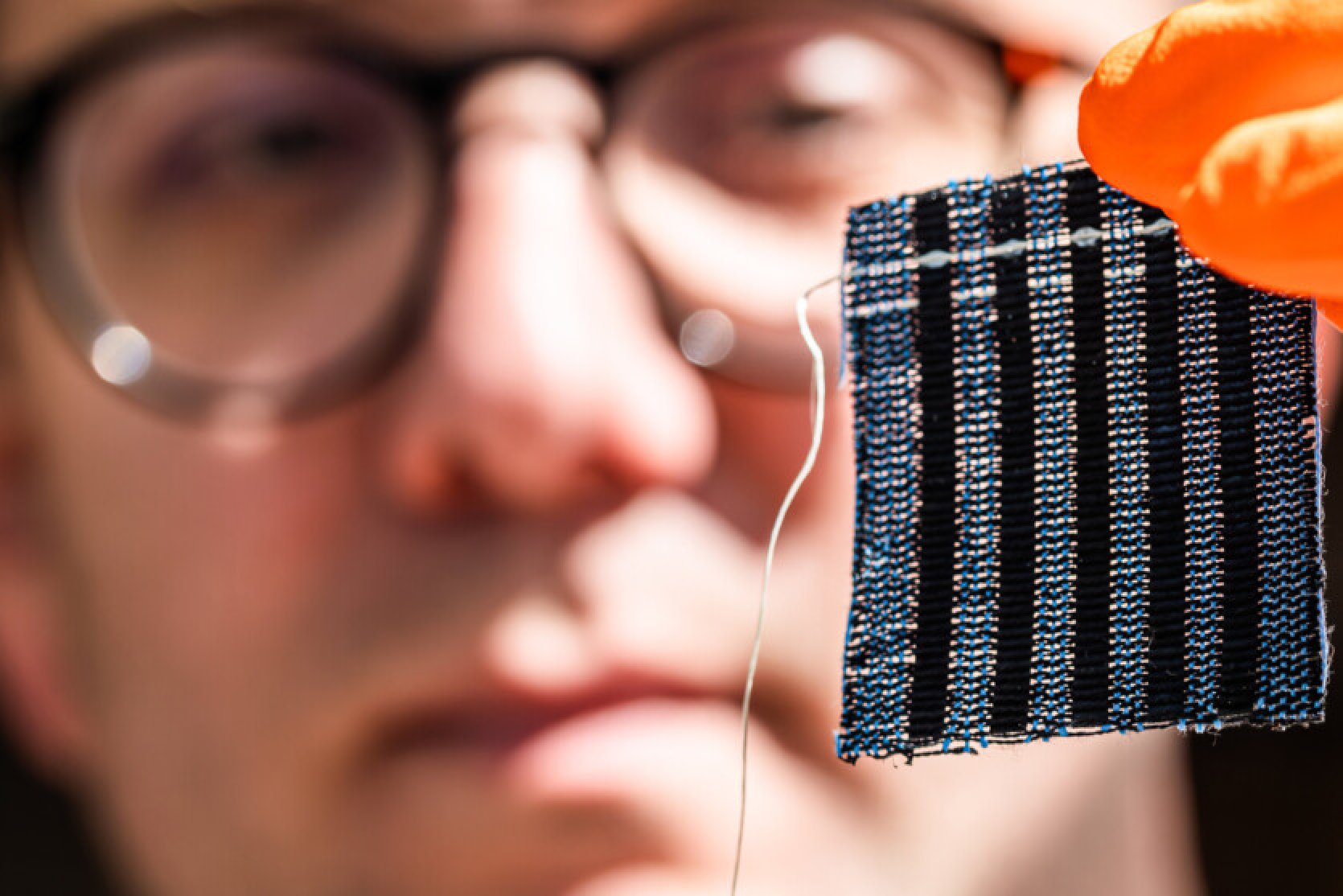Muscles made from fabric will help create an exoskeleton. In the long term, this material could be integrated into clothing to provide additional strength when lifting heavy objects and similar tasks.
“When we talk about an exoskeleton, we often envision a somewhat robotic figure with clumsy mechanical parts. However, a piece of clothing made from our fabric with textile muscles might be sufficient to enhance strength, for instance, while lifting weights,” says Edwin Jäger, a professor at Linköping University.
In 2017, Jäger’s research team, along with researchers from Borås University, demonstrated how a standard thread coated with conductive plastic (PEDOT and polypyrrole) can stretch and compress under the influence of electric current. This news generated significant buzz. However, a single thread lacks sufficient strength. As a result, the researchers developed fabric, which is much stronger, but the dynamics of the movement of the fabric are more complex than they might appear.
In a recently completed Horizon 2020 project, research teams from LiU and Borås University, along with the University of Twente in the Netherlands, CY Cergy Paris University in France, and companies Elitac Wearables and Wearable Technologies, developed a sleeve equipped with fabric muscles capable of providing tactile feedback.
“In the project, we focused on tactile sensations because the textile muscles are currently too weak and slow to function like real muscles,” states Karin Bake, a Ph.D. candidate from the Borås University School of Textile Technology.
The researchers demonstrated how the sleeve could be used for long-distance communication. Each user wears a sleeve connected to their own computer. When one person strokes their sleeve, the other feels the touch on theirs.
Built-in sensors detect the pressure of the stroking motion. These signals are sent to the receiving sleeve, where the fabric squeezes due to the textile muscles, creating pressure against the skin, perceived as touch. However, this technology is not only useful for couples wishing to maintain close relationships over distance.
“For visually impaired individuals, this represents an opportunity to receive information about their environment through their clothing, aiding navigation, for example, in urban settings,” comments Jäger.
He believes it could also be utilized in the gaming industry as an enhancement to virtual reality, improving the gaming experience. For instance, players can feel pressure on their bodies when shot at in a game.
“This area represents big money right now. Perhaps this is the direction you should pursue to commercialize the product first. After that, further investment can be directed towards other, more intriguing programs beneficial to society,” Jäger notes.
The next step in the research is increasing the weight that each textile muscle can lift. The long-term goal is to create clothing embedded with textile muscles, yielding a soft exoskeleton that remains invisible from the outside.
“In elderly care, this would be an excellent choice for both staff and the elderly themselves. But it could also be relevant for builders and others engaged in heavy physical labor,” he added.
The Horizon 2020 project called Weafing has concluded, but research and collaboration between LiU and Borås University continue, thanks to a 6 million Swedish kronor grant from the Erling Persson Foundation, which has supported research since 2017. Nils-Krister Persson, a senior lecturer at Borås University, believes they have only scratched the surface of the technology’s potential:
“Our bodies have muscle fibers, and who better to be experts on fibers than the textile world? In many ways, we can take inspiration from nature and realize it in textiles. Following our scientific breakthroughs, we eagerly anticipate the development of innovations that could benefit people,” he adds.
According to Edwin Jäger, progress is moving quickly. The first active soft exoskeleton could emerge in the near future.
Source: TechXplore














Comments (0)
There are no comments for now